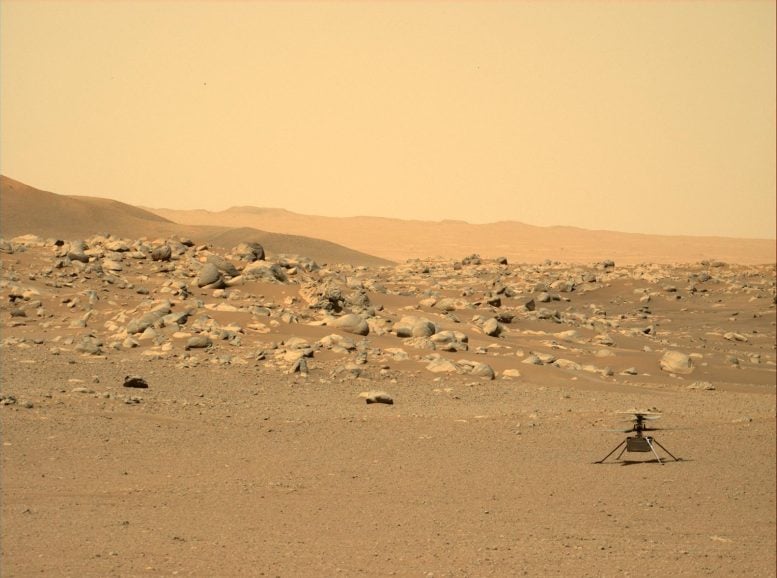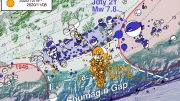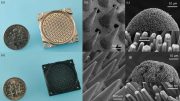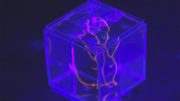
NASA’s Mars Perseverance rover acquired this image using its Left Mastcam-Z Camera. Mastcam-Z is a pair of cameras located high on the rover’s mast. This image was acquired on June 15, 2021 (Sol 114). Credit: NASA/JPL-Caltech/ASU
Since Ingenuity’s historic first flight on April 19, where it hovered about 10 feet (3 meters) above the Martian surface for 30 seconds, we have been progressively stretching the capabilities of the helicopter by flying farther, faster, and more aggressively. Ingenuity has flown at altitudes up to 33 feet (10 meters) and ground speeds up to 13 feet (4 meters) a second. It covered a distance of 873 feet (266 meters) on Flight 4, and stayed in the air for 139.9 seconds on Flight 6. It has navigated between five different airfields, three of which were identified based on satellite imagery only. It has even survived an in-flight anomaly while still landing within about 16 feet (5 meters) of its intended target.
In doing all of those things, Ingenuity has already exceeded our expectations. But on Flight 9 we are taking things to a new level with a high-speed flight across unfriendly terrain, which will take us far away from the rover.
Perseverance is currently at the eastern edge of a scientifically interesting region called “Séítah,” which is characterized by sandy ripples that could be very challenging terrain for wheeled vehicles like the rover. Ingenuity’s last two flights have been designed to keep up with the rover on this journey.
Rather than continuing to skip ahead of the rover, however, we will now attempt to do something that only an aerial vehicle at Mars could accomplish – take a shortcut straight across a portion of the Séítah region and land on a plain to the south. On the way, we plan to take color aerial images of the rocks and ripples that we pass over.
To accomplish this feat, we will break our own records for distance, time aloft, and groundspeed. Ingenuity will be instructed to fly 2,051 feet (625 meters) at 5 meters (16 feet) per second and remain airborne for approximately 167 seconds. This max effort will also challenge Ingenuity’s navigation algorithm in a fundamentally new way. This onboard algorithm which lets Ingenuity determine where it is along the flight path, was designed for a comparatively simple technology demonstration over flat terrain and does not have the design features to accommodate high slopes and undulations that are to be found in Séítah. The undulations can cause oscillations of a few meters in the altitude control of the helicopter but Ingenuity flies sufficiently high above the terrain that this will not be a problem.
However, these slopes and abrupt changes in the slope path can also cause significant heading deviations as the slanted ground images taken by the camera are interpreted onboard using a flat-ground assumption. There is the distinct possibility that the cumulative effect of this is a large lateral error at the destination landing site, with delivery errors of many tens of feet (or meters). We have taken mitigation steps to minimize this by flying slower over the challenging sections we encounter in the early portions of the flight to reduce the down-track errors from a large initial heading error.
Nevertheless, even though the final destination is centered in a good 164-foot-radius (50-meter-radius) patch of clear ground, it is possible that we will end up landing on a more treacherous, higher-relief surface than the relatively benign, sandy patches we have been able to pick so far. And it will stretch the capabilities of the helicopter’s telecom system, which was designed for line-of-sight communication over distances of a few hundred meters. All of this amounts to a significantly elevated risk, and it is safe to say that it will be the most nerve-wracking flight since Flight 1.
So why are we willing to take that risk? First, we believe Ingenuity is ready for the challenge, based on the resilience and robustness demonstrated in our flights so far. Second, this high-risk, high-reward attempt fits perfectly within the goals of our current operational demonstration phase. A successful flight would be a powerful demonstration of the capability that an aerial vehicle (and only an aerial vehicle) can bring to bear in the context of Mars exploration – traveling quickly across otherwise untraversable terrain while scouting for interesting science targets. A successful Flight 9 will also provide the rover science team with close-up images of the Séítah terrain that they will otherwise be unable to acquire.
Flight 9 is expected to occur no earlier than late the night of Sunday, July 4, with data coming down in the following days. Stay tuned to see how Ingenuity handles its biggest challenge yet.
Theodore Roosevelt said: “Far better is it to dare mighty things, to win glorious triumphs, even though checkered by failure…than to rank with those poor spirits who neither enjoy nor suffer much, because they live in a gray twilight that knows not victory nor defeat.” That is the basis of the JPL motto to “dare mighty things,” and we will get a chance to live that on Flight 9. Wish us good luck.
Written by Håvard Grip, Chief Pilot & Bob Balaram, Chief Engineer for the Mars Helicopter Project at NASA’s Jet Propulsion Laboratory.









Be the first to comment on "NASA Ingenuity Mars Helicopter: We’re Going Big for Flight 9"